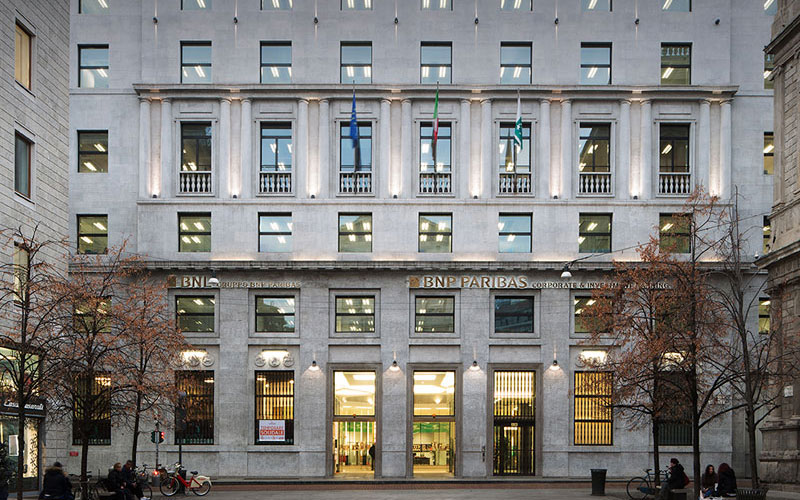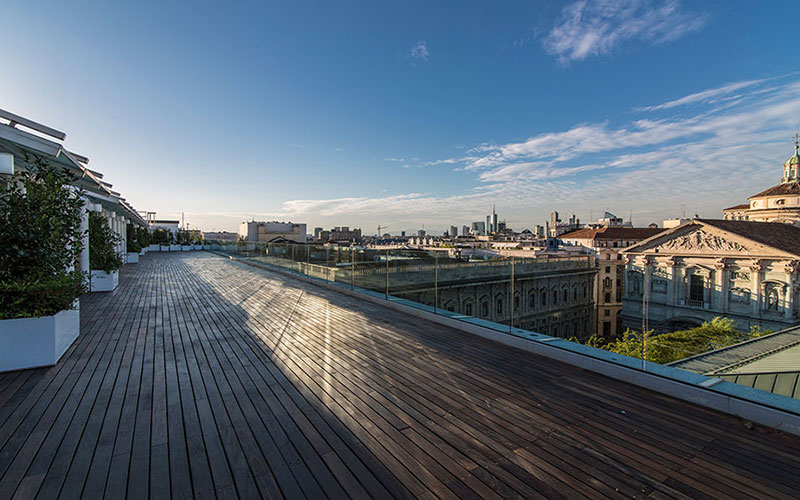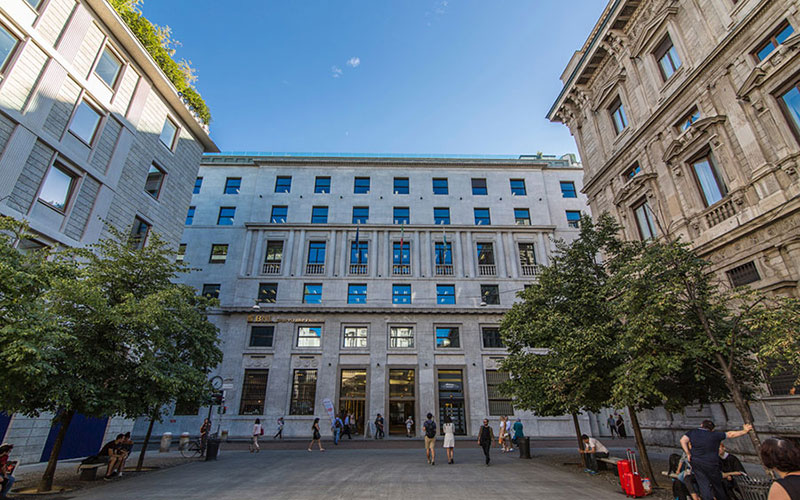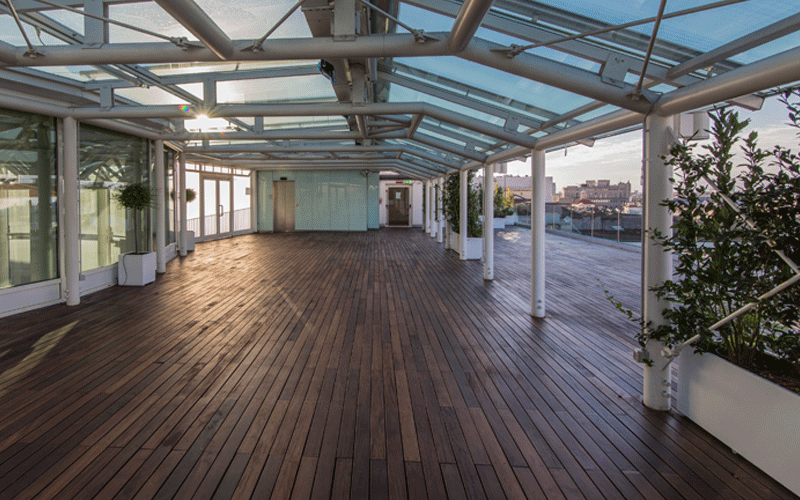During a time in history when important Milanese urban areas are being requalified and brought back to a new state of beauty, the city center, rich in antique buildings often left to languish in obsolescence, finds itself at the focus of the process aimed at the recovery of past splendors which are now becoming interwoven with sustainability and modernity. It is in this context that the regeneration of palazzo San Fedele is under way, at the hands of Coima, which has extensive expertise in sustainable renovation projects as proven by its track record which counts Palazzo Aporti, Gioiaotto and the ex Unilever tower on Via Bonnet, now almost completed, amongs its noteworthy recent projects.
Right in the heart of late nineteenth century Milanese culture, and center of the business world, after housing, over the years, the historic Teatro Manzoni and two leading financial groups, San Fedele stands in the piazza bearing its own name, in front of an elegant church also bearing its name. What distinguishes this city icon most of all is its urban contest, in that it is surrounded by the most renowned architectural splendors of the city center. At a glance, we see Palazzo Marino and Piazza Della Scala, with its theater serving as the fulcrum of Milanese culture, renowned throughout the world for over two hundred years and an iconic destination for visitors and music and theater enthusiasts. From there, we see the entrance to Galleria Vittorio Emanuele II, the classical and majestic face of a vintage Milan which even today continues to stand out for its classic ambience and commercial traditions which were born right here and which have made this city an international point of reference. Just a few steps away is the Duomo, which dominates the surrounding cityscape with its spires, and Santa Radegonda, a classic old street of energy and commerce which closes the triangle, bringing us back to the piazza.
The requalifaction of this historical gem, designed by the architectural firm Studio Asti Architetti, will enable San Fedele to recover its majestic essence, preserving the elegance and aesthetics of its original environments, while also enriching them through an intervention focusing on sustainable innovation.
During a time in history when important Milanese urban areas are being requalified and brought back to a new state of beauty, the city center, rich in antique buildings often left to languish in obsolescence, finds itself at the focus of the process aimed at the recovery of past splendors which are now becoming interwoven with sustainability and modernity. It is in this context that the regeneration of palazzo San Fedele is under way, at the hands of Coima, which has extensive expertise in sustainable renovation projects as proven by its track record which counts Palazzo Aporti, Gioiaotto and the ex Unilever tower on Via Bonnet, now almost completed, amongs its noteworthy recent projects.
Right in the heart of late nineteenth century Milanese culture, and center of the business world, after housing, over the years, the historic Teatro Manzoni and two leading financial groups, San Fedele stands in the piazza bearing its own name, in front of an elegant church also bearing its name. What distinguishes this city icon most of all is its urban contest, in that it is surrounded by the most renowned architectural splendors of the city center. At a glance, we see Palazzo Marino and Piazza Della Scala, with its theater serving as the fulcrum of Milanese culture, renowned throughout the world for over two hundred years and an iconic destination for visitors and music and theater enthusiasts. From there, we see the entrance to Galleria Vittorio Emanuele II, the classical and majestic face of a vintage Milan which even today continues to stand out for its classic ambience and commercial traditions which were born right here and which have made this city an international point of reference. Just a few steps away is the Duomo, which dominates the surrounding cityscape with its spires, and Santa Radegonda, a classic old street of energy and commerce which closes the triangle, bringing us back to the piazza.









